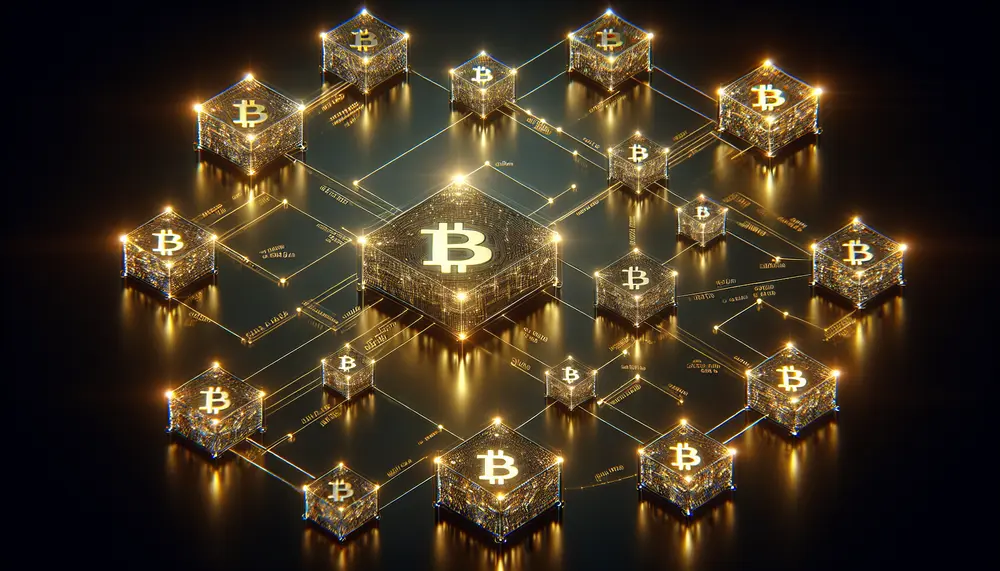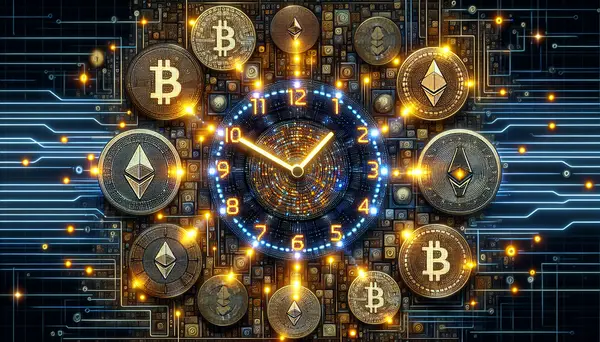Posts on the Topic Bitcoin Mining and Halving

Bitcoin mining involves verifying transactions on the Bitcoin network by solving complex mathematical puzzles, which secures the blockchain and rewards miners with new Bitcoins. This process requires specialized hardware, significant electricity consumption, and is driven by economic incentives such as...

Bitcoin mining involves validating transactions on the blockchain by solving complex mathematical problems, rewarding successful miners with bitcoins while ensuring network security and integrity. Despite being a legitimate process crucial for Bitcoin's decentralized nature, it requires significant investment in hardware...

The article provides an overview of "Bake," a native cryptocurrency token used within certain blockchain protocols, explaining its role in governance, rewards, and transaction facilitation. It emphasizes the importance for beginners to understand Bake's creation, distribution, utility in decentralized applications...

The Bitcoin network is a decentralized digital infrastructure that enables the creation, transfer, and storage of Bitcoin without central oversight, using blockchain technology to maintain an immutable transaction ledger. It consists of miners who secure transactions, nodes maintaining the blockchain's...

Bitcoin mining involves verifying transactions on the Bitcoin network by solving complex mathematical puzzles, which secures the blockchain and rewards miners with new Bitcoins. This process requires specialized hardware, significant electricity consumption, and is driven by economic incentives such as...

Bitcoin mining involves validating transactions on the blockchain by solving complex mathematical problems, rewarding successful miners with bitcoins while ensuring network security and integrity. Despite being a legitimate process crucial for Bitcoin's decentralized nature, it requires significant investment in hardware...

The Bitcoin Halving 2024 is a crucial event that reduces the mining reward by half, impacting supply control, inflation mitigation, market sentiment, and mining dynamics. Expected in April 2024 at block number 840,000, this halving historically leads to price increases...

Cryptocurrency mining involves solving complex mathematical problems to validate transactions on a blockchain, with platforms like NiceHash simplifying this by allowing users to rent computing power for mining. NiceHash serves as a marketplace connecting buyers and sellers of mining power,...

The article provides an overview of "Bake," a native cryptocurrency token used within certain blockchain protocols, explaining its role in governance, rewards, and transaction facilitation. It emphasizes the importance for beginners to understand Bake's creation, distribution, utility in decentralized applications...

The Bitcoin network is a decentralized digital infrastructure that enables the creation, transfer, and storage of Bitcoin without central oversight, using blockchain technology to maintain an immutable transaction ledger. It consists of miners who secure transactions, nodes maintaining the blockchain's...

The Bitcoin hashrate is a critical measure of the network's computational power, reflecting both its security and miners' confidence; as of December 12, 2023, it stands at 523.70 EH/s indicating robust activity despite market fluctuations. Factors like Bitcoin price volatility,...

Bitcoin halving is an automatic process that occurs approximately every four years, reducing the number of new Bitcoins generated by miners by half to control inflation and ensure scarcity. Historically, these events have led to significant increases in Bitcoin's price...

Bitcoin farming, or mining, involves using powerful computers to solve complex mathematical problems related to verifying transactions on the blockchain and is rewarded with bitcoins. However, it comes with high initial costs for computer equipment and ongoing expenses such as...

Bitcoin miners are individuals or entities that process transactions on the blockchain network, validating new transactions and recording them onto a global ledger known as Blockchain. They face challenges such as fierce competition and high electricity consumption, but can mitigate...
Top 10 posts in the category
Unsere Beiträge zum Thema Bitcoin Mining and Halving
Bitcoin Mining and Halving are pivotal topics within the cryptocurrency universe, and our dedicated category offers a deep dive into the intricacies and mechanics behind these phenomena. Bitcoin mining is the process by which new bitcoins are entered into circulation, but it is also a critical component of the maintenance and development of the blockchain ledger. By exploring our articles, you'll gain a comprehensive understanding of how miners use powerful computers to solve complex mathematical problems, ultimately earning them newly minted bitcoins as a reward for their efforts.
As the bitcoin network grows, the mining difficulty adjusts, and this is where the concept of halving comes into play. Halving refers to the event that reduces the reward for mining new blocks by half, hence impacting the supply of new bitcoins and influencing the bitcoin price. Our collection of articles sheds light on the effects of halving events on the cryptocurrency market and helps you grasp how these changes can influence your investment strategies.
The insights you gain from our resources not only enhance your understanding of Bitcoin mining and halving, but also provide valuable information on the state of the network and potential forecasts for the digital currency. Whether you're a miner looking to optimize your setup or an investor curious about how halving events might affect the value of bitcoin, the knowledge you'll acquire here is indispensable. Embrace the opportunity to become well-versed in these critical aspects of the cryptocurrency space and potentially improve your decision-making with the high-quality, detailed content offered in our Bitcoin Mining and Halving category.








